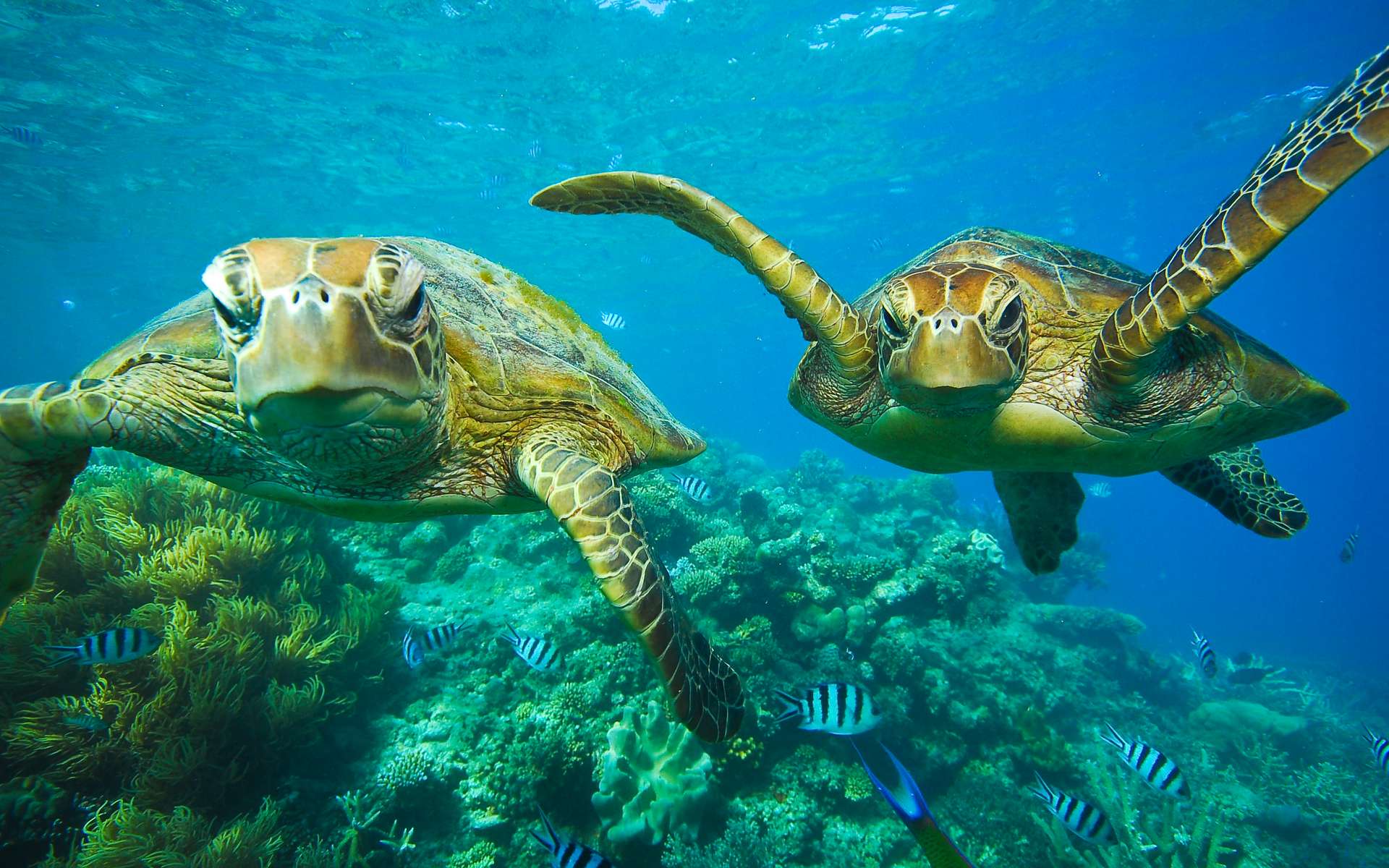Otodus megalodon, the largest shark that ever lived on Earth, most certainly reached at least 15 m (50 feet) in total length based on its gigantic teeth. New research demonstrates that individuals of Otodus megalodon were on average larger in cooler water than those in warmer water.

Shimada et al. suggest that the notion that Otodus megalodon reached at least 15 m total length, and possibly as much as 18-20 m total length, should be applied primarily to individuals that lived in cooler waters. Image credit: Karen Carr / CC BY 3.0.
Otodus megalodon is an extinct species of mackerel shark that lived from the middle Miocene to the Pliocene, approximately 15 to 2.6 million years ago.
This prehistoric monster was a top-level predator that fed on whales and other marine mammals.
It had a cartilaginous skeleton and was therefore poorly preserved with exception of its teeth, but paleontologists believe that it looked a lot like the great white shark (Carcharodon carcharias), only far larger.
It is generally accepted scientifically that Otodus megalodon reached lengths of at least 15 m (50 feet) and possibly as much as 20 m (65 feet).
In a new study, DePaul University’s Professor Kenshu Shimada and colleagues re-examined published records of geographic occurrences of Otodus megalodon teeth along with their estimated total body lengths.
“Our findings suggest a previously unrecognized body size pattern for the fossil shark, notably following a geography-driven ecological pattern known as Bergmann’s rule,” Professor Shimada said.
“Introduced by the German biologist Carl Bergmann in the mid-1800s, Bergmann’s rule is a broad generalization explaining that larger animals thrive in cooler climates because their size helps them retain heat more efficiently compared to animals with smaller bodies.”
“Scientists constantly search for rules of life that help us predict natural patterns, and it seems that Bergmann’s rule applied to Otodus megalodon,” added Dr. Victor Perez, a paleontologist at the Calvert Marine Museum.
Some sites were previously identified as possible nursery areas of Otodus megalodon because those sites yield smaller teeth on average relative to other localities.
However, the new study found that the previously identified nursery areas for the ancient shark are located near the equator, where water is warmer.
“It is still possible that Otodus megalodon could have utilized nursery areas to raise young sharks,” said Dr. Harry Maisch, a paleontologist at Bergen Community College and Fairleigh Dickinson University.
“But our study shows that fossil localities consisting of smaller Otodus megalodon teeth may instead be a product of individual sharks attaining smaller overall body sizes simply as a result of warmer water.”
“The main conclusion of this study is that not all geographically different Otodus megalodon individuals grew to gigantic sizes equally,” Professor Shimada said.
“The common notion that the species reached 18-20 m (59-65 feet) total length should be applied primarily to populations that inhabited cooler environments.”
The findings were published in the journal Historical Biology.
_____
Kenshu Shimada et al. Revisiting body size trends and nursery areas of the Neogene megatooth shark, Otodus megalodon (Lamniformes: Otodontidae), reveals Bergmann’s rule possibly enhanced its gigantism in cooler waters. Historical Biology, published online March 6, 2022; doi: 10.1080/08912963.2022.2032024
Note: This article have been indexed to our site. We do not claim legitimacy, ownership or copyright of any of the content above. To see the article at original source Click Here












